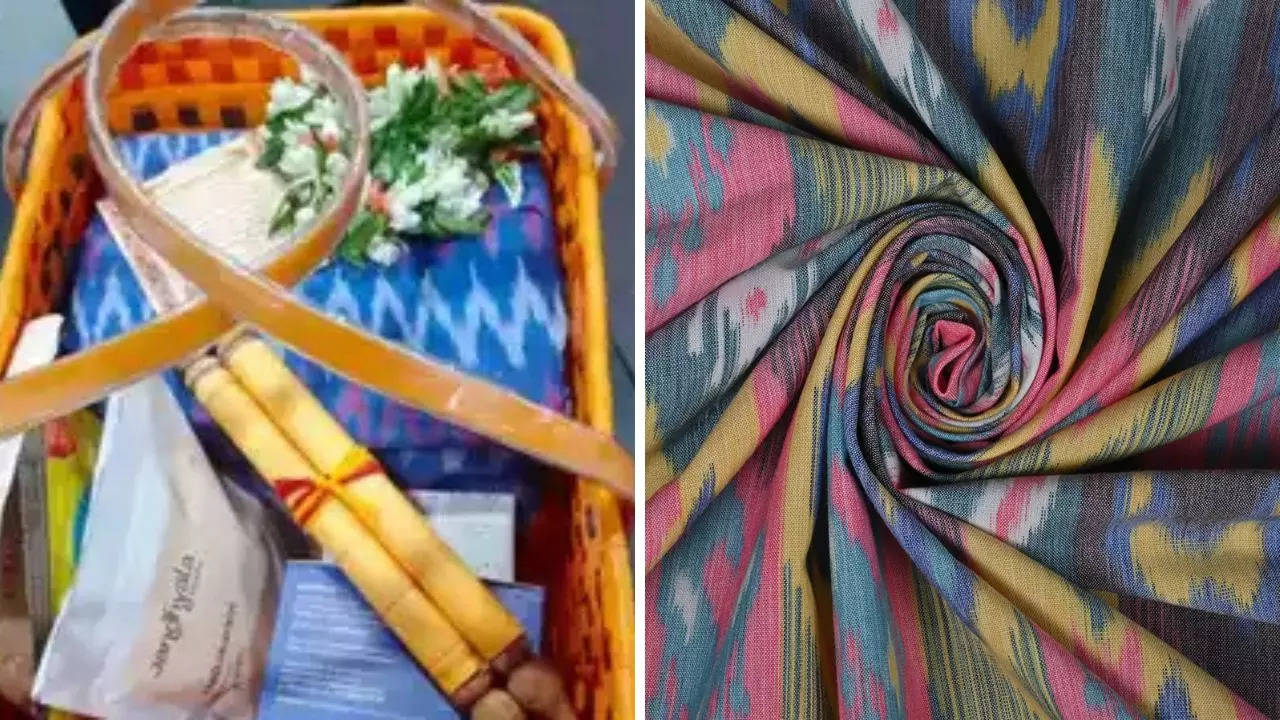
Actors Naga Chaitanya and Sobhita Dhulipala's wedding invite includes a hamper that has gone viral. Among the goodies in the hamper is a blue Ikat textile, which could be a stole, dupatta, or a saree. But what exactly is Ikat?
All About Ikat
Bright colours, along with irregular or curvilinear stripes and motifs, characterise Ikat, an ancient dyeing technique from Indonesia. Over 5,000 years old, it involves the process of resist-dyeing yarns before weaving them, creating a distinct and dynamic effect. The word “Ikat” comes from the Malay-Indonesian verb mengikat, meaning to cord, knot, or bind, referring to the resist-dyeing technique used to create Ikat patterns in fabric. “What’s unique about Ikat textiles is that the woven fabric is not dyed; instead, the yarn itself is resist-dyed before the Ikat weaving—unlike other resist-dyeing methods such as Indonesian batik and shibori (Japanese tie-dye), where the resist is applied to the woven cloth,” writes Danine Alati for Architectural Digest.
The Ikat technique involves binding threads together using wax-treated cotton. This method helps select areas where the dye will penetrate the thread, and which areas will resist the colour. The pattern for weaving is then planned accordingly.
There are three types of Ikat: Warp Ikat, Weft Ikat, and Double Ikat. A variation of Double Ikat is known as "Compound Ikat."
Warp ikat is the most common method, and it involves resist-dyeing only the warp threads. Weft ikat only resist-dyes the weft threads (the threads that are woven through the warp yarns). Double Ikat is the most intricate and meticulous technique of all and is currently practised in only three countries: India, Indonesia, and Japan. The famous Puttapaka saree is a Double Ikat.
The regions of Gujarat, Odisha, and Telangana are the three main centres of Ikat weaving. The Pochampally Ikat and Odisha Ikat have been given GI tag.

